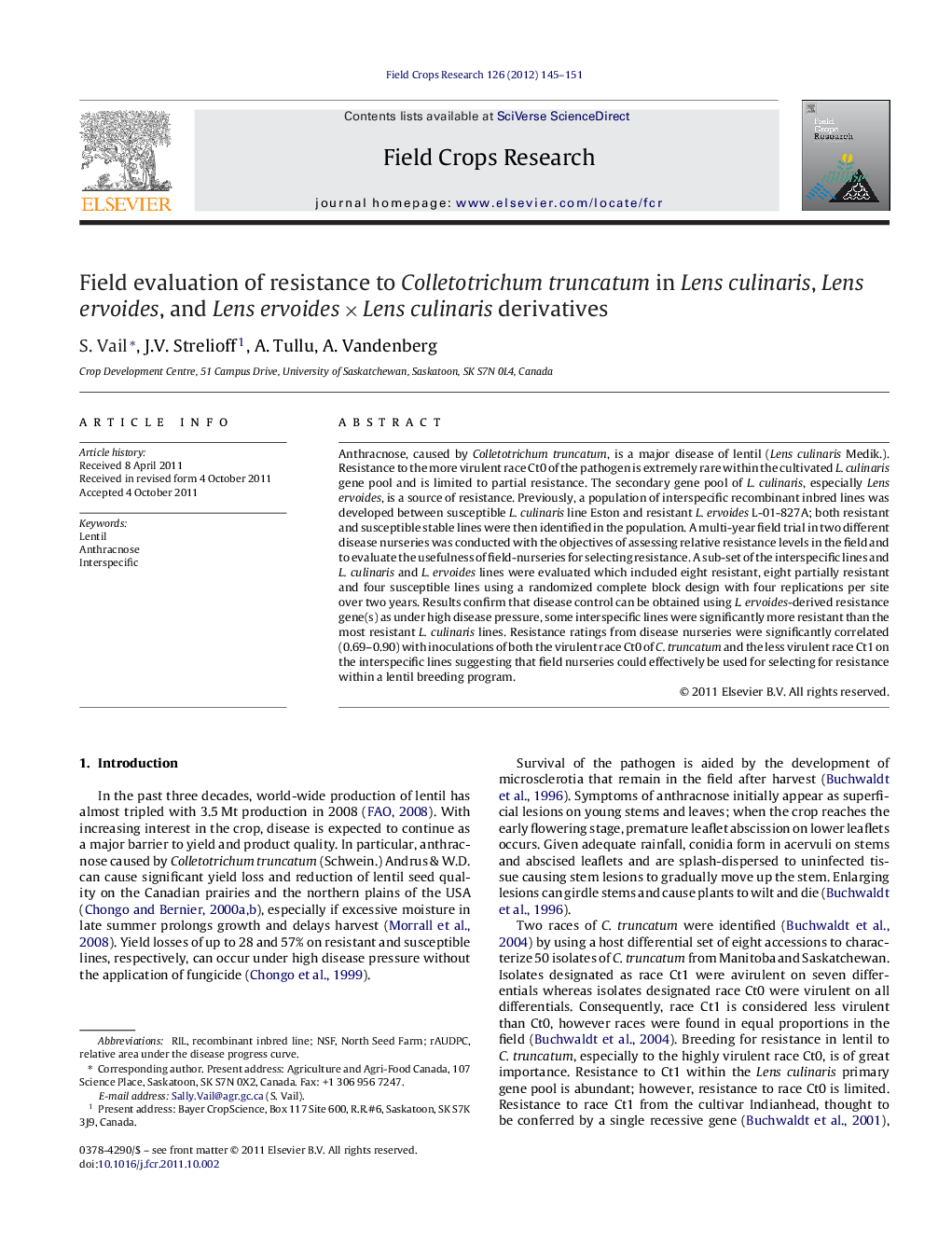| Article ID | Journal | Published Year | Pages | File Type |
|---|---|---|---|---|
| 4510575 | Field Crops Research | 2012 | 7 Pages |
Anthracnose, caused by Colletotrichum truncatum, is a major disease of lentil (Lens culinaris Medik.). Resistance to the more virulent race Ct0 of the pathogen is extremely rare within the cultivated L. culinaris gene pool and is limited to partial resistance. The secondary gene pool of L. culinaris, especially Lens ervoides, is a source of resistance. Previously, a population of interspecific recombinant inbred lines was developed between susceptible L. culinaris line Eston and resistant L. ervoides L-01-827A; both resistant and susceptible stable lines were then identified in the population. A multi-year field trial in two different disease nurseries was conducted with the objectives of assessing relative resistance levels in the field and to evaluate the usefulness of field-nurseries for selecting resistance. A sub-set of the interspecific lines and L. culinaris and L. ervoides lines were evaluated which included eight resistant, eight partially resistant and four susceptible lines using a randomized complete block design with four replications per site over two years. Results confirm that disease control can be obtained using L. ervoides-derived resistance gene(s) as under high disease pressure, some interspecific lines were significantly more resistant than the most resistant L. culinaris lines. Resistance ratings from disease nurseries were significantly correlated (0.69–0.90) with inoculations of both the virulent race Ct0 of C. truncatum and the less virulent race Ct1 on the interspecific lines suggesting that field nurseries could effectively be used for selecting for resistance within a lentil breeding program.
► A multi-year, multi-location disease nursery field trial compared interspecific-derived resistance to that in L. culinaris and L. ervoides. ► Results confirm that effective disease control can be obtained using L. ervoides-derived resistance gene(s). ► Disease nursery ratings correlated with inoculations of both the races of C. truncatum on the interspecific lines. ► Field nurseries can effectively be used for selecting for resistance within a lentil breeding program.
